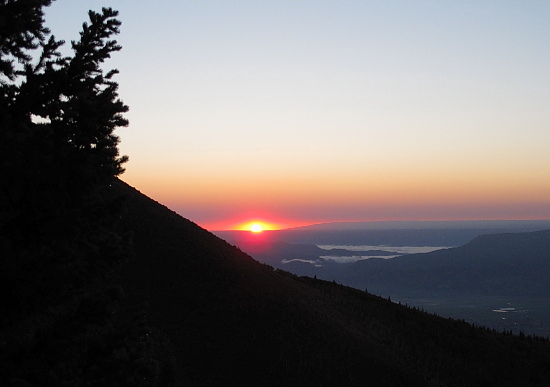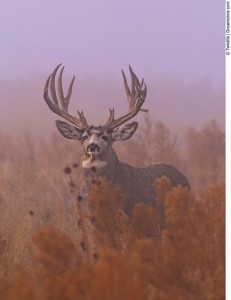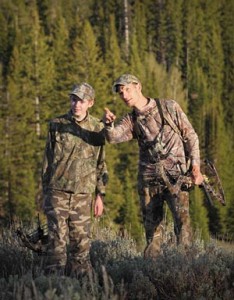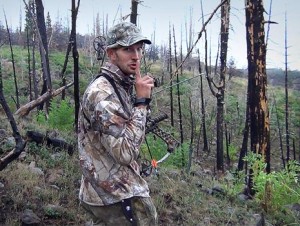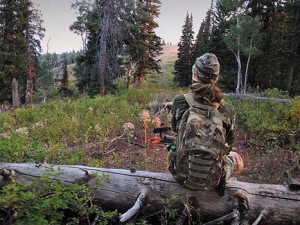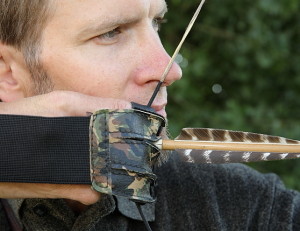
Pre-Hunt Meditation
Bowhunting success for general archery deer in Utah is about 20%. That’s about double what it was 20 years ago, mostly due to better equipment. Still, the average bowhunter is looking to harvest a deer only once every five years. That’s bleak!
Zenbowhunter.com is dedicated to raising those numbers for people looking to expand their outdoor knowledge and shooting skills.
Bowhunting success hinges upon five factors:
1. Luck: The truth is most big bucks are stumbled upon by chance, not skill. By improving your hunting skills, you also increase your luck.
2. Equipment: Having precision weaponry, optics, and gear certainly helps tightens your arrow groupings and reduces the chance of error. But it doesn’t contribute anything to actual hunting technique or woodscraft. These factors come through experience, scouting, and diligent study.
3. Technique: This is the actual hunting part: learning everything about your prey, then locating it, and finally executing a successful stalk. Humans are as much a part of nature as the deer are, so the goal is to reconnect with your natural predatory instincts and use it to your advantage.
4. Information: Learning your area through scouting, studying maps, and collecting data from your state’s wildlife division will help you pin-point deer concentrations, access, and what you can expect from your selected hunt area.
5. Expanding Consciousness through Meditation: I belioeve that this is what separates the consistently successful hunters from the rest. The “great unknown” is what Zen Hunting is all about; aka, turning the unknown into the known. You might call it “advanced hunting techniques” but it’s really just the process falling into the rhythm of nature, collecting data in the form of sign and clues, and following your natural predatory instincts. Zen meditation–whether formal or not–helps you achieve a higher state of awareness by expanding your consciousness.
Before entering the woods I begin to fall into a meditative state by focusing my energies on the upcoming hunt. I go about my work and other responsibilities in a seemingly normal way, but my real focus is on the mountains. Phones ring, people talk, distractions arise, but nothing can assuage my focus.
Pre-hunt mediation can be a lot harder to achieve in this modern era, mainly due to constant distractions. Most people are just too busy and/or too distracted to relax and meditate. Between work, texts, emails, family, and the myriad of other responsibilities, we can’t seem to get in the zone.
Sure, we’re excited about the upcoming hunt, but we don’t really break free from the busy life until we pull out of the driveway and head for the hills. It will then take at least a few days of hard hunting to get into the rhythm of nature. By then, the hunt could be over!
Pre-hunt mediation might sound like a bunch of hippie-hogwash, but it has worked for me for many years. If you’ve stuck with me this far, then you’re in luck. I’m going to share a few techniques for getting into the rhythm of nature:
- Spend some time in nature alone. Drive to the mountains and take a short hike. Spend some time sitting near water, trees, etc. Just sit and watch and listen. Take some photos. Taking pictures forces you to look for beauty in nature, which in turn helps you connect with it.
- Watch hunting videos and read hunting books and magazines. By observing how animals act and react to other hunters, it will help you prepare for similar encounters. It will also get you into the hunting mindset beforehand.
- Study topo maps of your hunting area. Look at places you’ve had success before, and even places where you’ve failed. What are the differences? Can you find similar places on the map? Mark places where you’ve seen big bucks in the past. Deer are creatures of habit, so chances are there will be more there. Make a skeleton plan of your hunt; where will you be hunting on opening morning, and then where will you go from there?
- Shoot daily. Even if you already shoot regularly, do it differently. Instead of just seeing your same old target, make up scenarios. Before you draw the bow, imagine a deer feeding along. Take a second to let the scenario play out. The deer is behind cover, it steps forward and looks the other way. Now shoot. On the next arrow imagine an elk, a bear, a rabbit, whatever. Just make it more realistic. Brain studies show that the subconscious mind has a hard time distinguishing between reality and make-believe. This exercise will put you into the hunter mindset. Plus it’s fun.
These are just a few of the methods I use to get into the spirit of hunting before I set foot in the woods. Establishing the hunter’s mindset ahead of time will contribute more to success than anything else you do.
The few hunters who have consistent success are the ones who don’t view bowhunting as a hobby or a sport, but a lifestyle. Make that commitment, set a goal, and view hunting a way of life. The numbers say your odds are 1-in-5, but you can beat the odds by putting in a little extra effort. I truly believe that success in bowhunting is a decision, not luck.

